

History Project On Roman Empire For Class 11 Arts CBSE
Table of Contents
Acknowledgment
Embarking on the journey to unravel the rich tapestry of the Roman Empire has been a rewarding odyssey, and the completion of this project wouldn’t have been possible without the support, guidance, and inspiration of several individuals.
First and foremost, I extend my deepest gratitude to my mentor [Mentor’s Name], whose wisdom and encouragement steered me through the complexities of Roman history. Their invaluable insights and unwavering support played a pivotal role in shaping the depth and accuracy of this project.
I extend heartfelt thanks to the authors whose seminal works served as the foundation for my research. The dedication of scholars such as Mary Beard, Adrian Goldsworthy, and others illuminated the path, providing a robust framework upon which this project was built.
Special appreciation goes to my peers and friends who engaged in thoughtful discussions, offering perspectives that enriched the narrative. Their enthusiasm and camaraderie added a vibrant dimension to the project.
I express gratitude to the academic community and the wealth of resources available, both online and offline, that facilitated comprehensive research and fact-checking.
Lastly, I want to acknowledge the unwavering support of my family. Their patience, understanding, and encouragement provided the emotional sustenance needed to navigate the intricacies of this endeavor.
This project stands as a collective effort, a testament to the collaboration and shared passion for history. Each contributor, whether directly or indirectly, has played a significant role in the realization of this exploration into the captivating world of the Roman Empire.
Thank you to everyone who contributed to this project, leaving an indelible mark on its pages.
Introduction
In the vast expanse of history, few civilizations have left an imprint as profound and enduring as the Roman Empire. Embarking on a journey through time, this project aims to unravel the complexities and grandeur of one of the world’s most iconic empires. The story of Rome, with its legendary foundation, awe-inspiring expansion, periods of peace and prosperity, and eventual decline, is a saga that echoes through the corridors of centuries.
Our exploration begins with the enigmatic tale of Romulus and Remus, the mythical founders of Rome, leading us into the heart of the early Republic and the establishment of the intricate Roman government structures. As we traverse the chapters of Roman history, we delve into the empire’s relentless expansion, marked by epic conflicts such as the Punic Wars and the conquests led by the indomitable Julius Caesar.
The narrative then shifts to the golden age of Pax Romana, a period characterized by relative stability, unprecedented prosperity, and remarkable achievements in arts, architecture, and governance. We navigate through the reigns of iconic emperors, including Augustus, Trajan, and Hadrian, witnessing the zenith of Rome’s cultural and political influence.
However, the empire’s journey is not devoid of shadows. In the latter chapters, we confront the intricate factors that contributed to Rome’s decline, from internal strife and political instability to external threats posed by invading forces. The project meticulously explores the split of the Roman Empire into the Western and Eastern realms, each facing distinct challenges, culminating in the poignant tale of the fall of the Western Roman Empire.
As we embark on this historical odyssey, accompanied by maps, timelines, and vivid imagery of Roman artifacts and architecture, we invite you to immerse yourself in the rich narrative of a civilization that not only shaped the course of its time but also left an enduring legacy that continues to influence our world today. Join us as we traverse the epochs of Rome, where each chapter unfolds a new layer of the captivating story that is the Roman Empire.
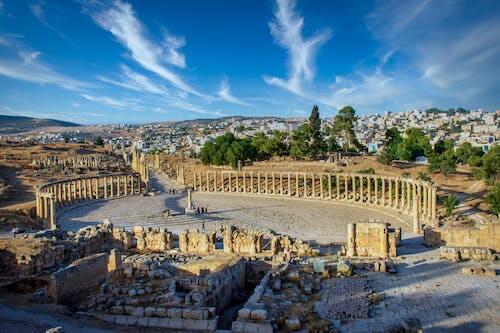
Foundation of Rome – Legends and Republic
Embark on a journey through the legendary origins of Rome with the tale of Romulus and Remus. Witness the nascent stages of the Roman Republic, where the foundations of governance were laid. In this chapter, we navigate the early events that propelled Rome forward, exploring the intricate web of political structures that would define its destiny.
Expansion and Conquests – The Rise of a Colossus
Dive into the epic narrative of Rome’s expansion, marked by the intense Punic Wars against Carthage. Feel the pulse of conquest as Julius Caesar leads campaigns into Gaul and Britannia, forever altering the map of the known world. As Rome’s dominion grows, we unravel the societal and economic transformations spurred by its ambitious expansion.
Pax Romana (Roman Peace) – A Golden Era
Bask in the glow of stability and prosperity during the Pax Romana, a period marked by artistic and architectural brilliance. Navigate through the reigns of iconic emperors like Augustus, Trajan, and Hadrian, witnessing the zenith of Rome’s power and influence. This chapter unveils the achievements that shaped an era of unparalleled peace and prosperity.
Decline of the Roman Empire – Unraveling the Threads
Peer into the internal turmoil that plagued Rome, from political instability to corruption. Examine external threats posed by Germanic tribes and the Huns, unraveling the intricate tapestry of the empire’s decline. Economic challenges, including the weight of slave labor and financial woes, cast shadows on the once-mighty Roman Empire.
Split of the Roman Empire – Divided Paths
Witness the empire’s division into the Western and Eastern Roman Empires, each facing unique challenges. Explore the divergent paths taken by these halves as they navigate the complexities of their geopolitical landscapes.
Fall of the Western Roman Empire – The Final Curtain
Stand witness to the harrowing events that led to the fall of the Western Roman Empire, from the Visigothic sack of Rome in 410 AD to its ultimate collapse in 476 AD. Delve into the myriad theories surrounding its demise, unraveling the complex interplay of factors that sealed its fate.
Byzantine Empire – Continuation of Roman Legacy
Extend the exploration into the Byzantine Empire, the Eastern counterpart that emerged from the remnants of the Roman Empire. Uncover the Byzantine’s enduring influence on culture, religion, and governance, highlighting key emperors such as Justinian and Theodora. Explore the empire’s longevity, the construction of Hagia Sophia, and its intricate relationship with the evolving world.
Roman Contributions to Law and Governance
Dive into the legal and governmental systems that the Romans pioneered. Examine the development of Roman law, including the Twelve Tables, and its lasting impact on modern legal systems. Unearth the principles of Roman governance that laid the groundwork for democratic ideals and the rule of law in Western societies.
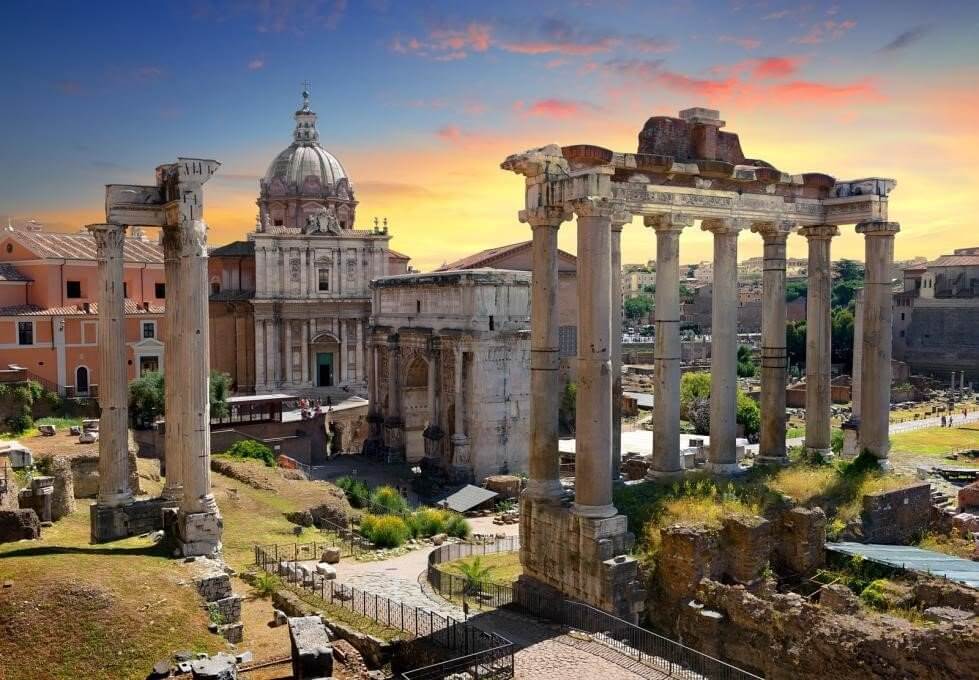
Legacy Beyond Borders – Roman Influence on Architecture
Shift focus to the enduring architectural marvels that stand as testaments to Roman engineering prowess. Explore iconic structures like the Colosseum, the Pantheon, and aqueducts, unraveling the architectural innovations that continue to inspire contemporary designers. Examine the adaptation of Roman architectural principles in modern structures.
Rediscovering Rome – Archaeological Insights
Delve into the world of Roman archaeology, exploring ongoing excavations and discoveries that provide new perspectives on daily life, trade, and cultural practices. Highlight recent findings that reshape our understanding of the Roman Empire, shedding light on previously overlooked aspects of this ancient civilization.
Myths and Realities – Debunking Common Misconceptions
Address common myths and misconceptions surrounding the Roman Empire. Dissect popular beliefs about Roman life, culture, and governance, providing a nuanced understanding based on historical evidence. Challenge preconceived notions and offer a more accurate portrayal of the complexities within the Roman world.
Enduring Influences – Rome in Modern Culture
Examine the far-reaching impact of Rome on contemporary culture. Analyze how Roman themes permeate literature, art, cinema, and even political ideologies. Investigate the ways in which the Roman legacy continues to shape our perceptions and inform our understanding of power, governance, and societal structures.
As we draw the final curtain on this expedition through the epochs of Rome, it becomes abundantly clear that the Roman Empire was not merely a historical entity but a force that resonates through the annals of time, shaping the course of human civilization in profound ways. Each chapter of this project has unfolded a layer of the intricate tapestry that is Rome, and in concluding our journey, we find ourselves immersed in the enduring echoes of its legacy.
From the mythical origins of Romulus and Remus to the splendors of Pax Romana, and the poignant fall of the Western Roman Empire, the Roman narrative is one of triumphs, tribulations, and timeless contributions. The Byzantine Empire, the legal and governance systems, architectural marvels, and the ongoing revelations from archaeological endeavors all serve as threads in the rich fabric of Rome’s influence.
Beyond the pages of history, Rome’s enduring legacy extends into modern society. Its architectural marvels continue to captivate, its legal principles underpin contemporary legal systems, and its cultural impact reverberates in literature, art, and cinema. The myths and realities surrounding Rome challenge our perceptions, inviting us to reconsider preconceived notions about this remarkable civilization.
In our reflections, we recognize that Rome’s lessons are not confined to the past; they are embedded in the very foundations of our present and future. The resilience of the Roman spirit, the pursuit of knowledge, the quest for governance, and the architectural ingenuity remain guiding beacons for societies across the globe.
As we step away from the pages of this project, we carry with us the profound understanding that the echoes of Rome persist not merely in the ruins and remnants but in the ideas, institutions, and inspirations that continue to shape our world. The story of Rome is not a closed chapter but an ongoing narrative, as we, the inheritors of its legacy, navigate the currents of time with the wisdom garnered from the timeless city on the seven hills.
Bibliography
- Beard, Mary. (2007). SPQR: A History of Ancient Rome . Profile Books.
- Goldsworthy, Adrian. (2003). The Complete Roman Army . Thames & Hudson.
- Gibbon, Edward. (1776). The History of the Decline and Fall of the Roman Empire . Penguin Classics.
- Grant, Michael. (1978). The History of Rome . Faber & Faber.
- Jones, A. H. M. (1964). The Later Roman Empire, 284-602: A Social, Economic, and Administrative Survey . Blackwell.
- Matyszak, Philip. (2007). Chronicle of the Roman Republic: The Rulers of Ancient Rome from Romulus to Augustus . Thames & Hudson.
- Ward-Perkins, Bryan. (2005). The Fall of Rome and the End of Civilization . Oxford University Press.
Certificate of Completion
This is to certify that I, [Student’s Name], a [Class/Grade Level] student, have successfully completed the “History Project On Roman Empire For Class 11 Arts Cbse.” The project explores the fundamental principles and key aspects of the chosen topic, providing a comprehensive understanding of its significance and implications.
In this project, I delved into in-depth research and analysis, investigating various facets and relevant theories related to the chosen topic. I demonstrated dedication, diligence, and a high level of sincerity throughout the project’s completion.
Key Achievements:
Thoroughly researched and analyzed History Project On Roman Empire For Class 11 Arts Cbse. Examined the historical background and evolution of the subject matter. Explored the contributions of notable figures in the field. Investigated the key theories and principles associated with the topic. Discussed practical applications and real-world implications. Considered critical viewpoints and alternative theories, fostering a well-rounded understanding. This project has significantly enhanced my knowledge and critical thinking skills in the chosen field of study. It reflects my commitment to academic excellence and the pursuit of knowledge.
In order to download the PDF, You must follow on Youtube. Once done, Click on Submit
Subscribed? Click on Confirm
Download History Project On Roman Empire For Class 11 Arts CBSE PDF
Related articles.

EVS Project On Electricity Consumption for Class 11th And 12th

Geography Project On Agriculture In India For Class 10 ICSE

English Project on The Portrait of a Lady For Class 11th CBSE

Geography Project On Meteorological Instruments and Their Uses For Class 9th
Leave a reply cancel reply.
Your email address will not be published. Required fields are marked *

Please Enable JavaScript in your Browser to Visit this Site.
- Skip to primary navigation
- Skip to content
- Skip to footer

11th Grade Curriculum Resources
Industrialization, Urbanization, Immigration, and Progressive Reform
- Progressivism, Lesson: “How are The Jungle & Fast Food Nation similar? What were the impacts of these texts?”
The Rise of the United States as a World Power
- Imperialism, Lesson: “What shaped Americans’ views on imperialism?”
- Immigration: “What was the response to mass immigration in the late nineteenth and early twentieth centuries?”
- Cultural Changes Lesson, “How were the 1920’s a time of cultural change?
The Great Depression and the New Deal
- Dust Bowl, Lesson: “Why did the Dust Bowl happen? How did this environmental catastrophe affect ordinary Americans?”
- Mexican Repatriation, Primary Source Set: “Why were 1 million Mexican Americans and immigrants forced to move to Mexico during the 1930s?”
America’s Participation in World War II
- Japanese American Incarceration, Lesson: “Why is it important to remember Japanese American incarceration during World War II?”
- Japanese American Internment, Sources: Archives in Context: Teachable Topics from the CSU Japanese American Digitization Project
Post-War America
Cold War Struggles Abroad
- Korean War, Lesson: “Who is to blame for the Korean War?”
- US Intervention in Latin America, Lesson: “What can Central America teach us about the exercise of US power?”
Cold War Struggles at Home
- Space Race, Lesson: “What was the Space Race? How has space exploration affected everyday life?”
- Vietnam lesson: “How did soldiers come to serve in Vietnam? Who fought in the Vietnam War? Why did they fight? How did the Vietnam War affect American servicemembers of color?”
Movement for Equality
- Civil Rights, Lesson: “What were the goals and outcomes of the Chicano Civil Rights movement in California?”
- Civil Liberties in California in the mid-20th Century: How did the encroachment on civil liberties impact Californians in the mid-20th century?
- Second Wave Feminism: How did various movements for equality build upon one another?
- Chicano Movement: What were the goals, outcomes, and impact of the Chicano Movement?
Contemporary American Society
- Disability Rights: How did disabled Americans expand their civil rights to more fully participate in our society?
- Third Wave Feminism: What types of liberation are Third Wave feminists interested in achieving?
- Fourth Wave Feminism: How are Third and Fourth Wave feminists pursing similar and different goals?
- Immigration Act of 1965, Lesson: “How has the Immigration Act of 1965 made the United States a multicultural society?”
UCI History Project
300D Murray Krieger Hall
Irvine, CA 92697-3275
- Curriculum and Resources

History Presentations for Class 11
Chapter 1: from the beginning of time, chapter 2: writing and city life, chapter 3: an empire across three continents, chapter 4: the central islamic lands, chapter 5: nomadic empires, chapter 6: the three orders, chapter 7: changing cultural traditions, chapter 8: confrontation of cultures, chapter 9: the industrial revolution, chapter 10: displacing indigenous peoples, chapter 11: paths to modernisation.

Amazon Affiliate Disclaimer: cbsecontent.com is a part of Amazon Services LLC Associates Program, an affiliate advertising program designed to provide a means for sites to earn advertising fees by advertising and linking to Amazon.in. As an amazon associates we earn from qualifying purchases.
myCBSEguide
- CBSE Class 11 History...
CBSE Class 11 History Syllabus 2022-23
Table of Contents
myCBSEguide App
Download the app to get CBSE Sample Papers 2023-24, NCERT Solutions (Revised), Most Important Questions, Previous Year Question Bank, Mock Tests, and Detailed Notes.
CBSE Class 11 History Syllabus 2022-23 includes Introduction to World History, Writing and City Life, An empire across three continents, Changing Cultural Traditions, Displacing Indigenous People etc for the session 2022 – 2023. Here is the detailed syllabus. To download class 11 History CBSE latest sample question papers for the 2023 exams, please install the myCBSEguide App which is the best mobile app for CBSE students. The myCBSEguide app not only provides you the CBSE class 11 History model question papers but it also provides class 11 History chapter-wise test papers, class 11 History best revision notes and other study material for class 11 History students.
CBSE Class – 11 History (Code No. 027) Syllabus (2022-23)
COURSE STRUCTURE
Theory: 80 Marks Time: 3 Hours
| 1. | Introduction to World History | 10 | |
| 2. | Introduction | 5 | |
| 3. | Writing and City Life | 20 | 10 |
| 4. | Introduction | 5 | |
| 5. | An empire across three continents | 20 | 10 |
| 6. | Nomadic Empires | 20 | 10 |
| 7. | Introduction | 5 | |
| 8. | The Three orders | 20 | 10 |
| 9. | Changing Cultural Traditions | 20 | 10 |
| 10. | Introduction | 5 | |
| 11. | Displacing Indigenous People | 20 | 10 |
| 12. | Paths to modernization | 20 | 15 |
| 165 | MAP WORK OF THE RELATED THEMES | 15 | 5 |
| 80 | |||
| 210 | 100 Marks | ||
THEMES IN WORLD HISTORY
- Growth of towns
- Nature of early urban societies
- Historians’ Debate on uses of writing
- Political evolution
- Economic expansion
- Religion-culture foundation
- Late Antiquity
- Historians’ views on the institution of Slavery
- The nature of nomadism
- Formation of empires
- Conquests and relations with other states
- Historians’ views on nomadic societies and state formation
- Feudal society and economy
- Formation of states
- Church and Society
- Historians’ views on decline of feudalism.
- New ideas and new trends in literature and arts
- Relationship with earlier ideas
- The contribution of West Asia
- Historians’ viewpoints on the validity of the notion ‘European Renaissance’
- European colonists in North America and Australia
- Formation of white settler societies
- Displacement and repression of local people
- Historians’ viewpoints on the impact of European settlement on indigenous population.
- Militarization and economic growth in Japan
- China and the Communist alternative.
- Historians’ Debate on the meaning of modernization
PROJECT WORK
Introduction.
History is one of the most important disciplines in school education. It is the study of the past, which helps us to understand our present and shape our future. It promotes the acquisition and understanding of historical knowledge in breath and in depth across cultures. The course of history in senior secondary classes is to enable students to know that history is a critical discipline, a process of enquiry, a way of knowing about the past rather than just a collection of facts. The syllabus helps them to understand the process, through which a historian collects, chooses, scrutinizes and assembles different types of evidence to write history. The syllabus in class-XI is organized around some major themes in world history. In class XII the focus shifts to a detailed study of some themes in ancient, medieval, and modern Indian history. CBSE has decided to introduce project work in history for classes XI and XII in 2013-14 as a part of regular studies in classroom, as project work gives students an opportunity to develop higher cognitive skills. It takes students to a life beyond text books and provides them a platform to refer materials, gather information, analyze it further to obtain relevant information and decide what matter to keep and hence understand how history is constructed.
Project work will help students:
- To develop skill to gather data from a variety of sources, investigate diverse viewpoints and arrive at logical deductions.
- To develop skill to comprehend, analyze, interpret, evaluate historical evidence, and understand the limitation of historical evidence.
- To develop 21st century managerial skills of co-ordination, self-direction, and time management.
- To learn to work on diverse cultures, races, religions, and lifestyles.
- To learn through constructivism-a theory based on observation and scientific study.
- To inculcate a spirit of inquiry and research.
- To communicate data in the most appropriate form using a variety of techniques.
- To provide greater opportunity for interaction and exploration.
- To understand contemporary issues in context to our past.
- To develop a global perspective and an international outlook.
- To grow into caring, sensitive individuals capable of making informed, intelligent, and independent choices.
- To develop lasting interest in history discipline.
FEW SUGGESTIVE TOPICS FOR CLASS XI PROJECTS
- Facets of the Industrialization in sixteenth-eighteenth centuries.
- Crusades: causes; rationale; events; outcomes; Holy Alliance
- Ancient History in depth: Mesopotamia
- Greek Philosophy and City States
- Contributions of Roman Civilization
- The spirit of Renaissance: Manifestation in art; Literature; Sculpture; Influence on Trading Community; Social Fabric; Philosophy; Political Values; Rational Thinking; Existentialism
- Aspects of Development-South American States/Central American States
- Different schools of thoughts-Realism: Humanism: Romanticism
- Piecing together the past of Genghis Khan
- Myriad Realms of Slavery in ancient, medieval, and modern world
- History of Aborigines – America/Australia
- Facets of Modernization – China/Japan/Korea
Guidelines for History Project Work: 20 Marks
- Expected Checklist for the Project Work:
- Introduction of topic/title
- Identifying the causes, events, consequences and/or remedies
- Various stakeholders and effect on each of them
- Advantages and disadvantages of situations or issues identified
- Short-term and long-term implications of strategies suggested during research
- Validity, reliability, appropriateness, and relevance of data used for research work and for presentation in the project file
- Presentation and writing that is succinct and coherent in project file
- Citation of the materials referred to, in the file in footnotes, resources section, bibliography etc.
- Assessment of Project Work:
- Project Work has broadly the following phases: Synopsis/ Initiation, Data Collection, Data Analysis and Interpretation, Conclusion.
- The aspects of the project work to be covered by students can be assessed during the academic year.
- 20 marks assigned for Project Work can be divided in the following manner:
- At the end, each learner will present the research work in the Project File to the External and Internal examiner.
- The questions should be asked from the Research Work/ Project File of the learner.
- The Internal Examiner should ensure that the study submitted by the learner is his/her own original work.
Test Generator
Create question paper PDF and online tests with your own name & logo in minutes.
Question Bank, Mock Tests, Exam Papers, NCERT Solutions, Sample Papers, Notes
Related Posts
- CBSE Class 11 Hindi Core Syllabus 2022-23
- CBSE Class 11 Hindi Elective Syllabus 2022-23
- CBSE Class 11 English Core Syllabus 2022-23
- CBSE Class 11 English Elective Syllabus 2022-23
- CBSE Class 11 Accountancy Syllabus 2022-23
- CBSE Class 11 Biology Syllabus 2022-23
- CBSE Class 11 Biotechnology Syllabus 2022-23
- CBSE Class 11 Business Studies Syllabus 2022-23
2 thoughts on “CBSE Class 11 History Syllabus 2022-23”
thank you for History MCQ Questions
Leave a Comment
Save my name, email, and website in this browser for the next time I comment.
11th Grade American History/U.S. History Lesson Plans
- Most Popular
- Most Recent

| Add to Folder | |
|---|---|
| creative writing | |
| children's book | |
| activities | |
| classroom tools | |
| language arts and writing | |
| vocabulary |
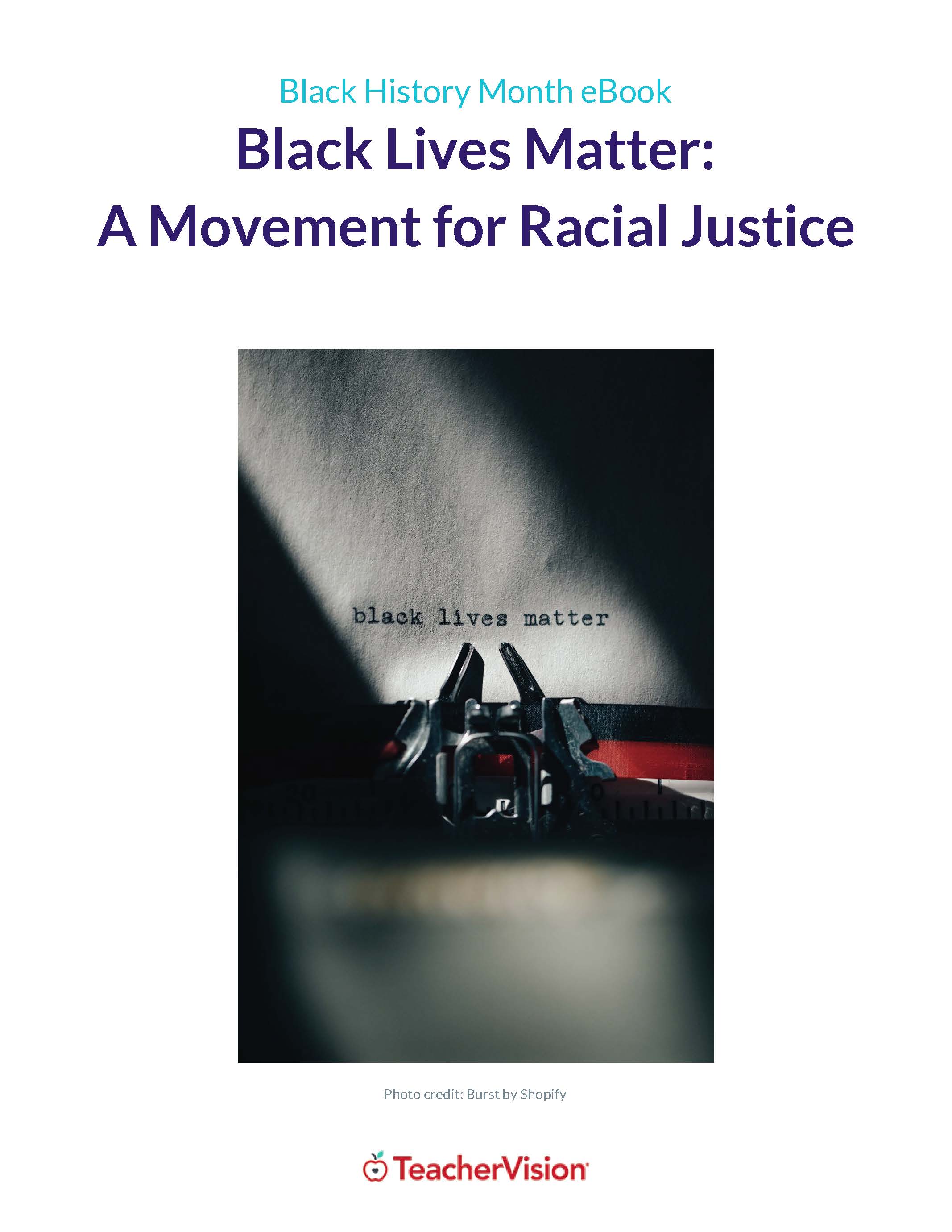
- PRIVACY POLICY
- TERM AND CONDITIONS
- NCERT BOOKS
- XII PRACTICE PAPERS
SST and History Notes XI- XII
Social science and history is dedicated to provide good and complete notes of each lesson and question answer according to CBSE new pattern. It also provide worksheet, practice papers,question with answers, map practice etc.which will be very helpful for students. Thanks

- _Question Answer
- _MCQS QUESTIONS
- _MIND MAPPING
- __QUESTION ANSWERS
- _DEMOCRATIC POLITICS-II
- __QUESTION ANSER
- __QUESTION ANSWER
- __Question answers
- __Question Answers
Tuesday 18 August 2020
- THEME 2. WRITING AND CITY LIFE (ANCIENT MESOPOTAMIA) (LESSON NOTES)
WRITING AND CITY LIFE
(ANCIENT MESOPOTAMIA)
(LESSON NOTES)
__________________________________________________________
v INTRODUCTION
Ø There were many ancient civilization developed along the banks of rivers in the world as Harappan civilization In India-Pakistan, Egyptian on Nile river, Greek civilization in Europe, Mesopotamia in middle east, Maya civilization, Hwang ho in China etc.
Ø Mesopotamia is oldest civilization where writing and city life started firstly. It derived from two Greek words mesos meaning middle and Potamas meaning river.
Ø Mesopotamia means land between two rivers-Euphrates and Tigris. Today it is part of Iraq.

Ø Mesopotamia was known for its Writing, City life, Trade Literature, Mathematics, Astronomy etc.
v NAMES AND LANGUAGE FOR THIS AREA
Ø This land was called by many names in different time period in recorded history and the people also used different languages as-
|
|
|
|
| Sumer | 3500-2300 BC | Sumerian-First Known language |
| Akkad | 2300-1900 BC | Akkadian-around 2400 BC started to used |
| Babylonia | 1900-1100 BC | Aramaic-from 1400 BC |
| Assyrians | 1100-612 BC |
|
v SOURCES ABOUT MESOPOTAMIA
Ø The excavation of these sites for long years which started from 1840 provides the details about the buildings, ornaments, graves, tools, etc.
Ø The European has showed much interest to know about this site as they believed that it was their ancestral land, according to Old Testament.
Ø So after that the written records (Tablets) were founded in large scale, which provides details about the lives of the ordinary people.
v MESOPOTAMIA AND ITS GEOGRAPHY
Ø The land of this area have diverse environments
Ø In the North east there are green undulating plains, tree-covered mountain ranges with streams. This areas receive enough rainfall to grow crops. Here, Agriculture began between 7000 and 6000 BCE.
Ø In North-there is a stretch of upland grasslands called a steppe, where people keep sheep and goats and produced meat, milk and wool in abundance.
Ø In the East-tributaries of the Tigris provide routes of communication in to mountains of Iran
Ø In the South there is a desert. It was the place from where the cities and writing emerged. Euphrates and Tigris carry loads of silt and deposited in this areas.
v OCCUPTION OF THE PEOPLE
Ø The people of Southern Mesopotamia grow wheat, barley, peas or lentil.
Ø Though it was rain scanty area but the channels of Euphrates and Tigris functioned as irrigation canals here.
Ø People also keep sheep and goat in steppe grass land, northeastern plain and on mountain slopes. They produced meat, milk and wool in large amount.
Ø Fish was also available in rivers and date-palms gave fruit in summer.
v FEATURES OF URBANISATION
Ø The earliest cities developed in Mesopotamia around 3000 BCE in Bronze Age Bronze is an alloy of copper and tin.In the cities more number of people living. They did not produce the food grains but produced many other things. There are many significance of urbanization-
§ The economics of urban areas depend on different activities like trade, manufactures and different services.
§ They depend on other people for different services. No one is self sufficient.
§ The division of labour is the important feature of urban life. Various people do different jobs and provide different services.
§ Raw material comes from different places for city manufacturers. It required organized trade and storage facilities and also the people who control on all these activities.
§ It developed the social organisation in the cities.
§ The urban economics also required to keep the written records.
v MOVEMENT OF GOODS INTO CITIES
Ø Mesopotamia produced large amount of food grains and textiles but lack of mineral resources, metals, stones, and wood.
Ø So they imported wood, copper, tin, silver, gold, shell, stones from Turkey and Iran by exchange their own products.
Ø Transport is very important for urban development to carry grains and charcoal into cities.
Ø Animal and bullock Carts were used as transports but the canals and natural channels provides the cheap mode of transportation.
Ø Euphrates became a world route.
v THE DEVELOPMENT OF WRITING
Ø Scripts or writings mean that spoken words were represented by visible sign. The script of Mesopotamia is known as cuneiform.
Ø Cuneiform is derived from the Latin words cuneus, meaning 'wedge' and forma, meaning 'shape’. The word cuneiform means wedge-shaped letters.
Ø These were written on tablets of clay. The Mesopotamian tablets contained picture like signs and numbers.
Ø Writing began in 3200 BCE in these cities when society needed to keep record of transactions.
Ø Scribe impresses the wedge shaped signs on wet clay with the sharp end of a reed.
Ø Once written, tablets were dried hard in the sun and it would be almost indestructible. It can’t use again. So each transaction required a separate written tablet.
Ø That is why hundreds of tablets found from Mesopotamian sites.
Ø By 2600 BCE language was Sumerian which was replaced by Akkadian after 2400 BCE.
v USES OF WRITING
Ø For the city life trade and writing was very important. Importance of writing was mentioned by a Sumerian epic related to ancient ruler of city Uruk, Enmerkar . He sent his messenger to Aratta for precious stone Lapis Lazuli but he failed to bring the stone. Finally the ruler sent the Tablet through his messenger. It shows the importance of writing. Initially writing was started to keep the list of transactions but later on it was used for different purposes as-
§ To Keep records
§ To Make dictionaries
§ To give legal validity to land transfers
§ To Narrate the deeds of kings
§ To announce the changes made in the customary laws of the land by kings.
§ To store information and to send messages.
v THE SYSTEM OF WRITING
Ø The sound that a cuneiform sign represented was not a single consonant or vowel as M or U but syllables like say, put, or in.
Ø For the different syllables different sign or pictures were used.
Ø So scribe had to learn hundreds of signs.
Ø He had to handle a wet tablet and get it written before it dried. So writing was a skilled craft.
Ø It conveys visual form of system of sounds of a particular language.
Ø In Mesopotamia the literacy was very less. Only Kings and Very few people could read and write.
Ø There were hundreds of signs to learn and many of these were complex.
Ø If a king could read, that was recorded in his boastful inscriptions.
Ø Writing reflected the mode of speaking.
v URBANISATION IN MESOPOTAMIA : TEMPLES & KINGS
v KINDS OF CITIES
Ø The settlements began in southern Mesopotamia by 5000 BC. The earliest cities emerged from some of these settlements. There were mainly three kinds of cities
§ Cities that developed around temples-
· Uruk was one of the earliest temple town. It was extended from 250 hectares to 400 hectares during 4200 BCE to 400 CE The archaeologists found the evidences that due to this extension dozens of small village were deserted. They also found many pictures of armed heroes and their victims.
§ Cities that developed as centres of trade
§ Imperial cities
v CONSTRUCTION AND MAINTENANCE OF TEMPLES
Ø The early settler began to build temple in some places in their village. These temples were small shrine made of unbaked bricks.
Ø Temples were the residence of various gods:
§ Moon God of Ur and
§ Inanna the Goddess of Love and War.
Ø Temples became larger over time with several rooms around open courtyards.
Ø Temples always had their outer walls going in and out at regular intervals.
Ø The god was the focus of worship. So People brought grain, curd and fish to god.
Ø The god was the theoretical owner of the agricultural fields, the fisheries, and the herds of the local community.
Ø Production process such as oil pressing, grain grinding, spinning and weaving of woolen cloth also done in the temple.
Ø Thus temple became the main urban institution by organizing production, employing merchants and keeping records of distribution and allotments of grain, plough animals, bread, beer, fish etc.
v ROLE OF KINGS IN CONSTRUCTION AND MAINTENANCE OF TEMPLES IN MESOPOTAMIA
Ø Archaeological records show that villages were periodically relocated in Mesopotamian history because of flood in the river and change in the course of the rivers.
Ø There were also manmade problems as well. Those who lived on the upstream stretches of a channel could divert so much water in to their fields that villages of downstream were left without water. There was continuous war fare in Mesopotamian villages for land and water.
Ø The victorious chiefs distributed the loot among their followers and took prisoners from the defeated groups. They were employed as their guards or servants.
Ø The chiefs also offer precious booty to the gods to beautify temples. He organize the distribution of temple wealth by keeping records. This gave the king high status and authority.
Ø War captives and local people had to work for the temple, or for the ruler. Those who were put to work were paid rations, clothes and oil. The archaeologist found ration list from here.
Ø Hundreds of people were put to work at making and baking of clay bricks, cones, woods, metal ore, pots, bronze tools etc. for temples
v LIFE IN THE CITY
v URBAN SOCIETY
Ø In the society the ruling elite class emerged in this time.
Ø This section has large share of the wealth as archaeologist found jewellery, gold vessels, musical instruments, white shells, lapis lazili etc from graveyard.
Ø The common persons were not so rich.
v FAMILY AND MARRIAGE
Ø We know about the common life of people from the legal text found by archaeologist.
Ø In Mesopotamian society the nuclear family system was the norm. The father was the head of the family.
Ø We know little about the procedures of marriage also.A declaration was made about the willingness to marry by the bride's parents.
Ø In marriage both parties ate together, exchange the gifts and made offerings in a temple.
Ø The bride was given her share of inheritance by her father. The father's house, herds, fields etc. were inherited by the sons.
v HOUSINGS IN UR
Ø Ur was one of the earliest cities excavated in the 1930s . From the excavation of this city we come to know about the houses of ordinary people.
Ø In the city Ur there was no town planning which was found in the contemporary Harappan cities.
Ø Here the streets were very narrow so the wheeled carts could not have reached many of the houses.
Ø Sacks of grain and firewood would have reached on donkey back.
Ø Here the shapes of house were very irregular.
Ø There was no street drains found. Instead of drains clay pipes were found in the inner courtyards of houses.
Ø House roofs sloped inwards and rainwater was channelled via the drain pipes in to sumps (covered basin) in the inner courtyards.
Ø People had swept their house hold and put it in to the streets. This made street level rise, and overtime the thresholds of houses had to be raised. So that no mud would flow inside after rains.
v HOUSES IN UR
Ø The archaeologist found that most of the house has no windows.
Ø The door of houses opens in their courtyard only.
Ø It was done to keep the privacy.
Ø Archaeologist found some tablets which present that people believe in some superstitions about houses like-
§ A raised threshold brought wealth.
§ A front door that did not open towards another house was lucky.
§ If the main door of a house open outwards, the wife would be a torment to her husband
v TOWN CEMETERY AT UR
Ø The graves of royalty and commoners have been found there.
Ø Very few individuals were found buried under the floors of ordinary houses.
v A TRADING TOWN IN A PASTORAL ZONE- MARI
v LOCATION OF CITY -MARI
Ø The royal city of Mari flourished after 2000 BC.
Ø Mari was located on the upstream of Euphrates.
v OCCUPATION OF PEOPLE
Ø In this region both agriculture and animal rearing were carried out by people.
Ø Some communities in the kingdom of Mari had both farmer and pastoralists but most of the region was used for pasturing sheep and goats.
Ø Herders exchanged animals, cheese, leather and meat in return for, grains, metal tools etc. with the farmers.
v CONFLICTS WITH FARMERS
Ø Though they exchange their products with farmers but some time there may be conflict among them.
Ø Shepherd may take his flock from a sown field, to the ruin of the crop.
Ø Sometimes herdsmen raid on agricultural villages and seize their stored goods.
Ø Sometimes settled groups deny pastoralists access to river and canal water along a certain set of paths .
Ø Nomadic groups of the western desert filtered into the prosperous agricultural land.
v KINGS OF MARI
Ø In these areas people come as herders, harvest labourers or hired soldiers. Occasionally they become prosperous and settled down here.
Ø These included the Akkadians, Amorites, Assyrians and Armaneans.
Ø The kings of Mari were Amorites and raised a temple at Mari for Dagan, god of steppe.
Ø It shows that Mesopotamian society and culture were open to different cultures. Thus the vitality of the civilization was of course an inter mixture culture.
Ø The rulers of Mari to be very vigilant. Herders of tribe were allowed but they were watched by kings and officials.
v TRADING CENTER
Ø Mari is a good example of an urban centre prospering on trade.
Ø It was located on the Eupharates in prime position of trade in Wood, copper, wine, tin, oil, etc. were carried in boats along the Euphrates between the south and Turkey, Syria and Lebanon.
Ø Boats carrying grinding stones, wood, and wine and oil jars, would stop at Mari on their way to southern cities.
Ø Officers of this town would go abroad, inspect the cargo and levy a charge of about one-tenth the value of the goods.
Ø Thus, although the kingdom of Mari was not militarily strong but it was exceptionally prosperous.
v CITIES IN MESOPOTAMIAN CULTURE
Ø Mesopotamians valued city life. Many communities and cultures lived side by side.
Ø After cities were destroyed in war, they recalled them in poetry.
Ø The Epic of Gilgamesh remind us the pride of the Mesopotamians who took in their cities.
§ Gilgamesh was the ruler of Uruk and a great hero who subdued people far and wide.
§ He got a shock when his heroic friend died .He then set out to find the secret of immortality.
§ After a heroic attempt, Gilgamesh failed, and returned to Uruk. There he consoled himself walking along the city wall, back and forth.
v The Legacy of Writing
Ø The greatest legacy of Mesopotamian was scholarly tradition of time reckoning and Mathematics.
Ø Mathematical contribution – Some tablets have been found which are dated around 1800 BCE. These tablets shows their contribution in mathematics as-
§ Tablets with multiplication and division tables.
§ Tables of square and square-roots.
§ Tables of compound interest.
§ The values of square root of 2 given by them are slightly different from the real value of square root of 2.
Ø Contribution in time reckoning
§ Mesopotamians had divided the year into 12 months according to the revolutions of the moon around the Earth.
§ They divided a month into 4 weeks.
§ The day into 24 hours and the hour into 60 minutes
§ This is the greatest contribution to the world.
Ø Contribution in Astrology
§ Mesopotamians people also noted the occurrence of solar and lunar eclipses.
§ They also observed the position of stars and constellations in the night sky and kept their records.
These achievements of Mesopotamia would not have been possible without writing and the urban institution of schools, where students read and copied earlier written tablets, and where some boys were trained to become not record keepers for the administration, but intellectuals who could build on the work of their predecessors.
v IMPORTANT POINTS
Ø The Book of Genesis of the Old Testament refers to ' Shimar 'as a land of brick built city was Sumer.
Ø The Mesopotamian tablets refer to copper from ' Alashiya' , the island of Cyprus, as a major item of trade contributing to Mari's urban prosperity.
Ø The warka Head (Lady of Uruk) is a world famous piece of sculpture, made of white marble at Uruk before 3000BCE.It is the earliest representation of the woman's mouth, chin and cheeks.
Ø The Palace at Mari of King Zimrilim was the residence of the royal family, the hub of administration, and a place of production. The palace had only one entrance, open courtyards beautifully paved and 260 rooms.
Ø The great Assyrian king Assurbanipal(668-627 BCE) collected a library at his capital Nineveh , possessing tablets on history, epics, omen literature, astrology, hymns and poems.
Ø Nabonidus was the last Babylonian king who was the world's first archaeologist.
Ø Connection between city life and trade and writing is brought out in a Sumerian epic poem about Enmerkar , the first king of Uruk.
| .
|
| 7000-6000 BCE -Beginning of agriculture in the northern Mesopotamian plains |
| c. 5000 BCE -Earliest temples in southern Mesopotamia built |
| c. 3200 BCE- First writing in Mesopotamia |
| c. 3000 BCE -Uruk develops into a huge city, increasing use of bronze tools |
| c. 2700-2500 BCE- Early kings, including, possibly, the legendary ruler Gilgamesh |
| c. 2600 BCE -Development of the cuneiform script |
| c. 2400 BCE -Replacement of Sumerian by Akkadian |
| 2370 BCE -Sargon, king of Akkad |
| c. 2000 BCE -Spread of cuneiform writing to Syria, Turkey and Egypt; |
| c. 2000 BCE -Mari and Babylon emerge as important urban centres |
| c.1800 BCE -Mathematical texts composed; Sumerian no longer spoken |
| c.1100 BCE -Establishment of the Assyrian kingdom |
| c. 1000 BCE -Use of iron |
| 720 - 610 BCE- Assyrian empire |
| 668 - 627 BCE -Rule of Assurbanipal |
| 331 BCE -Alexander conquers Bablyon |
| c. 1st century CE- Akkadian and cuneiform remain in use |
| 1850s - Decipherment of the cuneiform script |
27 comments:
Very good notes

Good useful notes sir

Thanks mam. Share to students.....
Very very thankyou for this kind of help
Very nice notes
Glad to have such notes. It's like a summary of what I have studied yet.
Thanks for motivation...
Thanks for taking the time to discuss this, I feel strongly about it and love learning more on this topic. If possible, as you gain expertise, would you mind updating your blog with extra information? It is extremely helpful for me. Lifeguard classes
I am very thankful that I have found such a wonderful and understandable notes. Being history i but tough subject, through these notes anyone can excel in it. Everything is given so clearly. Thank you for making this happen 😊😊😊
Thanks for your notes
These are great Antic write up Thanks for such post

DO VISIT MY BLOG GUYS https://artsofpen.blogspot.com/
https://istanbulolala.biz/ 2MB
yalova evden eve nakliyat tunceli evden eve nakliyat giresun evden eve nakliyat ağrı evden eve nakliyat van evden eve nakliyat ZW7
hatay evden eve nakliyat ısparta evden eve nakliyat erzincan evden eve nakliyat muğla evden eve nakliyat karaman evden eve nakliyat 1S234P
90BA9 Edirne Parça Eşya Taşıma Kalıcı Makyaj Burdur Evden Eve Nakliyat Çanakkale Parça Eşya Taşıma Karaman Lojistik Amasya Parça Eşya Taşıma Çerkezköy Korkuluk Keçiören Boya Ustası Erzurum Evden Eve Nakliyat
943DC Çerkezköy Oto Lastik Yenimahalle Boya Ustası Giresun Lojistik Sinop Lojistik Çerkezköy Çamaşır Makinesi Tamircisi Zonguldak Evden Eve Nakliyat Bitcoin Nasıl Alınır Uşak Şehir İçi Nakliyat Bitlis Şehir İçi Nakliyat
37D4A Bingöl Lojistik Bayburt Evden Eve Nakliyat Mardin Şehirler Arası Nakliyat Kütahya Lojistik Keçiören Boya Ustası Samsun Parça Eşya Taşıma Çerkezköy Cam Balkon Altındağ Fayans Ustası Çerkezköy Korkuluk
EF7FD Antalya Şehirler Arası Nakliyat Şırnak Şehir İçi Nakliyat Iğdır Şehirler Arası Nakliyat Çerkezköy Oto Lastik Karabük Şehir İçi Nakliyat Yozgat Şehirler Arası Nakliyat Yalova Şehir İçi Nakliyat Bingöl Lojistik Bartın Evden Eve Nakliyat
4F1EE Çankaya Boya Ustası Referans Kimliği Nedir Eskişehir Evden Eve Nakliyat Antep Evden Eve Nakliyat Etimesgut Boya Ustası Etlik Fayans Ustası Tokat Evden Eve Nakliyat Çerkezköy Mutfak Dolabı Çerkezköy Koltuk Kaplama
C52E4 Mercatox Güvenilir mi Tekirdağ Evden Eve Nakliyat Yozgat Evden Eve Nakliyat Kütahya Evden Eve Nakliyat Çerkezköy Koltuk Kaplama Referans Kimliği Nedir Pursaklar Boya Ustası Sinop Evden Eve Nakliyat Çerkezköy Televizyon Tamircisi
8E9E3 telegram kripto para grupları gate io kucoin bingx telegram kripto binance referans kod paribu bybit canlı sohbet uygulamaları
A0480 coin nasıl alınır coin nereden alınır kripto para haram mı January 2024 Calendar canlı sohbet uygulamaları bitcoin hesabı nasıl açılır telegram kripto kucoin bitmex
8DA2A binance en eski kripto borsası April 2024 Calendar kızlarla canlı sohbet probit bitcoin haram mı telegram türk kripto kanalları canlı sohbet odaları okex
CBC08 Viga 60000 Sprey viagra 100 MG Tablet Kamagra 100 MG Jel Themra Macun Maxman 100 MG Kapsül Sertleştici Jel Yapay Kızlık Zarı cialis 5 mg Degra 100 MG
A8A7B ---- ---- ---- ---- ---- ---- ---- ---- matadorbet
HISTORY(X) LESSON- 4 THE MAKING OF GLOBAL WORLD (LESSON NOTES)
HISTORY(X) LESSON- 4 THE MAKING OF GLOBAL WORLD (LESSON NOTES) ____...

subscription
Enter your email address:
Delivered by FeedBurner
Total Pageviews

Contact Form
Blog archive, popular posts.
- QUIZ : Theme -7 (An imperial capital Vijaynagara)
- GEOGRAPHY (VII)-LESSON-4 AIR (LESSON NOTES)
- THEME-2 KINGS FARMERS AND TOWNS (MAP WORK)
If you're seeing this message, it means we're having trouble loading external resources on our website.
If you're behind a web filter, please make sure that the domains *.kastatic.org and *.kasandbox.org are unblocked.
To log in and use all the features of Khan Academy, please enable JavaScript in your browser.
A brief introduction to US history
Unit 1: worlds collide (1491-1607), unit 2: colonial america (1607-1754), unit 3: the road to revolution (1754-1800), unit 4: the early republic (1800-1848), unit 5: the civil war era (1844-1877), unit 6: the gilded age (1865-1898), unit 7: rise to world power (1890-1945), unit 8: the postwar era (1945-1980), unit 9: the modern era (1980-present), unit 10: surveys of history, unit 11: primary documents.
Hurricane Beryl tracker: See projected path of Category 5 storm
After barreling through the Caribbean as a Category 5 hurricane Monday night, Hurricane Beryl is expected to pass through Jamaica on Wednesday as a Category 4 storm, bringing life-threatening winds and storm surge to the island, according to the National Hurricane Center .
Beryl weakened slightly Tuesday and has sustained winds of 145 mph, the NHC said Wednesday morning. The storm is moving toward the west-northwest at 20 mph, according to the NHC, and is expected to turn more toward the west Wednesday night or Thursday.
The storm is forecast to pass near or over Jamaica on Wednesday and near or over the Cayman Islands Wednesday night or early Thursday, according to the NHC. Beryl is then expected to move over the Yucatan Peninsula of Mexico early Friday.
Beryl is expected to begin weakening Tuesday, but the NHC says it will still be "near major hurricane intensity" as it passes Jamaica and the Cayman Islands. Additional weakening is expected thereafter, the NHC says, though Beryl is expected to remain a hurricane in the northwestern Caribbean.
Beryl tore through the Windward Islands on Monday after making landfall on Grenada’s Carriacou Island as a Category 4 storm at 11:10 a.m., according to the hurricane center. The hurricane had 150 mph winds when its eye made landfall on Carriacou.
Power was out throughout Grenada and residents were advised to shelter in place as Beryl brought down power lines and tore away roofs. The last major hurricane to reach the country's shores was Ivan, which caused widespread devastation with winds of more than 135 mph in 2004.
Hurricane Beryl live updates: Jamaica braces for 'devastating' conditions from Hurricane Beryl
Hurricane Beryl tracker: See projected path of Category 4 storm as it heads toward Jamaica
Chances of Invest 96L forming have dropped
Elsewhere in the Atlantic, the NHC is tracking showers and thunderstorms a storm associated with a storm designated as Invest 96L.
The system is currently located about 1,000 miles east-southeast of the Windward Islands and the NHC says environmental conditions are only "marginally conducive" for additional development as it moves across the central and western tropical Atlantic.
"Interests in the Lesser Antilles should still monitor the progress of this system, with heavy rainfall possible this week," the NHC said in an advisory Tuesday morning.
Hurricane Beryl in photos: See the damage as Category 4 storm moves through Caribbean
Hurricane Beryl path tracker
This forecast track shows the most likely path of the center of the storm. It does not illustrate the full width of the storm or its impacts, and the center of the storm is likely to travel outside the cone up to 33% of the time.
Hurricane Beryl spaghetti models
Illustrations include an array of forecast tools and models, and not all are created equal. The hurricane center uses only the top four or five highest performing models to help make its forecasts.
Atlantic storm tracker
Contributing: Susan Miller, John Bacon, Jorge L. Ortiz, Dinah Voyles Pulver & Thao Nguyen, USA TODAY; Cheryl McCloud, USA TODAY-Network Florida
Gabe Hauari is a national trending news reporter at USA TODAY. You can follow him on X @GabeHauari or email him at [email protected].

Lessons from American history in the wake of the Supreme Court immunity ruling

Dem Rep. Mike Quigley calls on Biden to step aside: 'Let someone else do this'

Trump World ‘panicking’ as Project 2025 gets on the radar of voters

Watch All In With Chris Hayes Highlights: July 3

'The rabbit has the gun': Reporter who exposed welfare scandal now risks jail
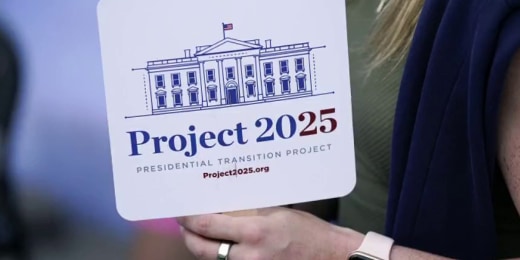
Project 2025’s ‘unhinged’ wish list: Criminalize porn, ban birth control
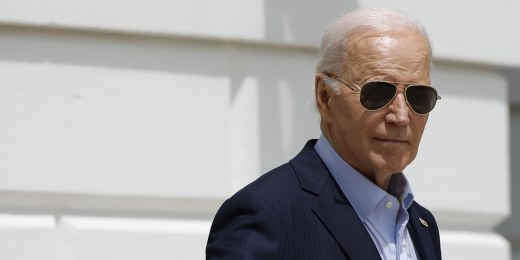

Raskin: ‘Lots of discussion’ happening ‘very quickly’ about Biden’s future

Lawrence reveals the ‘very bad news’ for Trump in the immunity decision

‘Death squad ruling’: Maddow reacts to Supreme Court Trump immunity decision
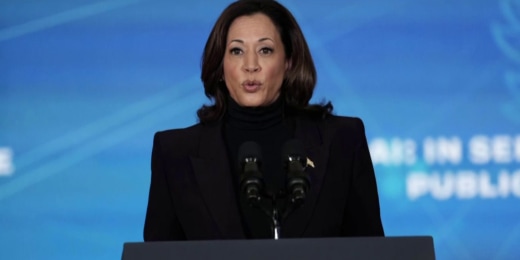
Could Biden be replaced as the nominee? An open convention, explained.
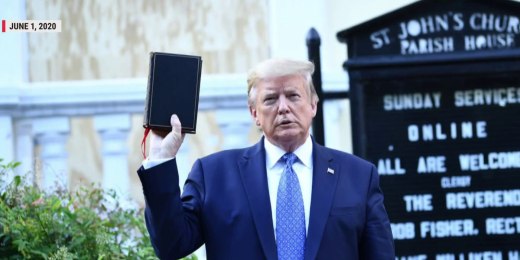
See Chris Hayes demolish Trump's '4 years ago' question with facts
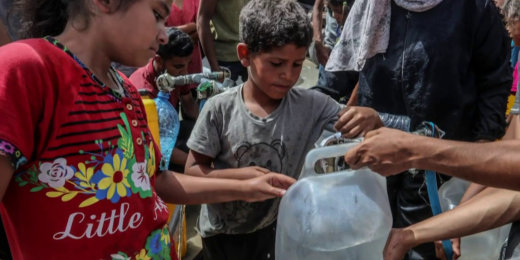
New setbacks in Gaza aid distribution as ‘catastrophic’ hunger levels loom

Watch All In With Chris Hayes Highlights: June 26

Pelosi ‘guarantees’ Trump will enact national abortion ban if he wins

‘Pro-corruption’: Hayes goes off on Supreme Court ruling $13k gift is not a bribe

Trump stolen documents found among Diet Coke, Christmas ornaments, new photos reveal

Watch All In With Chris Hayes Highlights: June 21
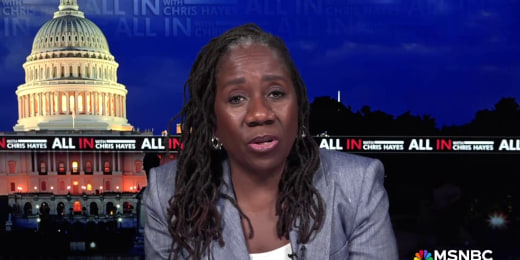
‘They’ve lost the plot’: Sherrilyn Ifill sounds off on the far-right Fifth Circuit

Bernie shreds billionaires backing Trump: 'They'd rather give up democracy than take a hit'

'Very loud silence': Masha Gessen on the 'Oasis of Peace' before and after Oct. 7
- Share this -
“Trump does not want people to know about the entire vanguard of extremist weirdos around him—and what their plans are when he governs,” says Chris Hayes on voters finding out about the far-right agenda that is Project 2025. July 5, 2024
MSNBC HIGHLIGHTS (BEST OF MSNBC)

Andrea Mitchell Reports
Biden tells democratic governors he needs more sleep and less work at night.

JD Vance is 'completely unqualified': Fmr. Rep. Jolly on Trump's potential VP picks

Morning Joe
Comedian sam morril set to release new stand-up special.

Ana Cabrera Reports
'let's do another': trump challenges biden to debate with 'no holds barred'.
- Rating Count
- Price (Ascending)
- Price (Descending)
- Most Recent
11th grade U.S. History projects
Resource type.
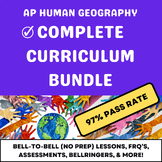
AP Human Geography - Complete Course Bundle (97% pass rate)

AP Psychology Complete Curriculum Bundle (NEW 2024-25)

AP Psychology - 120 Super Engaging "Do Nows" (Google Slides)

United States Government Full-Course Bundle (TEKS aligned)

Reconstruction Evaluation Interactive Project Activity

World War 2 Battles Radio Show Project: Pearl Harbor, D-Day, & More

The Sinking of the Lusitania: Solve the WWI Mystery w Primary Source Analysis!

History Crime Scene Investigation: The Lost Colony of Roanoke CSI

Stock Market Simulation Project

WWII Propaganda Posters Activities and Project Print & Digital
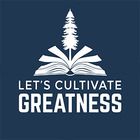
Civil War Battles Digital Research Project & Presentation|Distance Learning

Project Based Learning Packet for ALL of US History
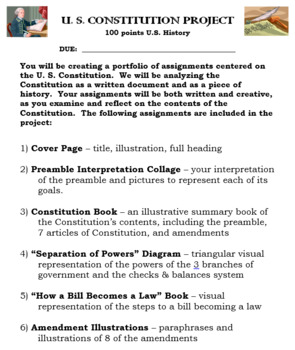
U.S. Constitution Project! - Preamble, Articles, Separation of Powers...

APUSH Period 4 Full Unit Scrapbook Project Based Learning - Digital + Print

Project: The Bill of Rights (distance learning option included)

Boston Massacre Primary & Secondary Source Analysis Lesson

History Crime Scene Investigation: Abraham Lincoln Assassination CSI

Quilt Codes of the Underground Railroad

Cold War - Research Project with Rubric (15 Cold War Events)
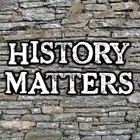
US History Thematic Inquiry PBL Full Course Bundle Print & Digital
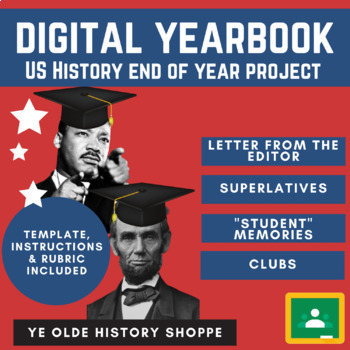
US History & APUSH End of Year Project: History Yearbook - Digital or Print

Historical Podcast Students Create a History Based Mini Podcast

Political Parties | Campaign Simulation Running for President

Civil War Poster Project - Battles & Leaders - Student Research & Presentation

Andrew Jackson Fight Card Poster Project
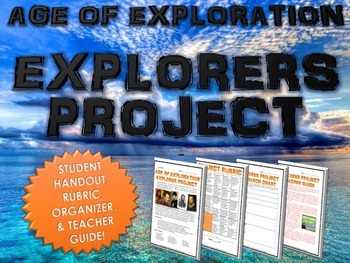
Age of Exploration / European Explorers - Research Project with Rubric

3 Branches of Government Unit - Activities Projects & DBQ

Bill of Rights Activity Student-Created Gallery Walk for US Constitution

- We're hiring
- Help & FAQ
- Privacy policy
- Student privacy
- Terms of service
- Tell us what you think
Watch CBS News
Beryl maps show path and landfall forecast of tropical storm that could become a hurricane again
By Cara Tabachnick , Emily Mae Czachor
Updated on: July 5, 2024 / 11:48 PM EDT / CBS News
Tropical Storm Beryl entered the Gulf of Mexico Friday night after making landfall early in the day as a hurricane on Mexico's Yucatan Peninsula before weakening, and was on a path that will likely bring it to Texas early next week, the National Hurricane Center in Miami said.
Beryl was forecast to strengthen while moving over the Gulf of Mexico and was expected to regain hurricane status by Sunday. It is expected to approach northeastern Mexico and the southern Texas Gulf Coast Sunday night.
The storm blew past the Cayman Islands and Jamaica earlier in the week, initially making landfall Monday over the island of Carriacou in Grenada while tearing through the Caribbean , strengthening at times to a Category 5 hurricane — the strongest rating .

What is Beryl's projected path?
The hurricane center said Friday's landfall was just northeast of the resort town of Tulum. After passing over the Yucatan, Beryl had entered the Gulf of Mexico Friday night.
"A turn to the northwest is expected later on Saturday, with the center of Beryl expected to approach the coast of northeastern Mexico and Texas Sunday and Sunday night," the hurricane center said.
Parts of northeastern Mexico and the lower and middle Texas coast were at risk of seeing hurricane-force winds and life-threatening storm surge late Sunday and Monday, according to the center.

CBS News Texas chief meteorologist Scott Padgett said its possible Beryl will make landfall near South Padre Island on Texas' southern coast. The storm was then expected to move into the northern part of the state later in the week, Padgett said.
"Depending on the path of Beryl, some spots of North Texas may see up to 7 inches of rain," Padgett said .
As of late Friday night, Beryl was 615 miles southeast of Corpus Christi, Texas. It was traveling northwest at 13 mph with maximum sustained winds of 60 mph, making it a tropical storm, but Beryl was expected to re-intensify from the warm waters of the Gulf of Mexico.
A hurricane watch was in effect for the Texas coast from the mouth of the Rio Grande northward to San Luis Pass, just south of Houston, and for Mexico's northeastern coast from Barra el Mezquital to the mouth of the Rio Grande.

Where is Beryl bringing rain and flooding?
Hurricane conditions were possible along the western Gulf Coast by late Sunday, according to the hurricane center.
"Heavy rainfall of 5 to 10 inches with localized amounts of 15 inches is expected across portions of the Texas Gulf Coast and eastern Texas beginning late Sunday through the middle of next week. This rainfall is expected to produce areas of flash and urban flooding," the center said.
Beryl became the first hurricane of the 2024 Atlantic hurricane season on Saturday and rapidly strengthened. It first reached Category 4 on Sunday, wavering back to Category 3 before returning to Category 4 on Monday and then becoming a Category 5 later Monday night. It is the first major hurricane east of the Lesser Antilles on record for June, according to Philip Klotzbach, Colorado State University hurricane researcher.
Brian McNoldy, a tropical meteorology researcher for the University of Miami, told The Associated Press warm waters fueled Beryl, with ocean heat content in the deep Atlantic the highest on record for this time of year.
Beryl has also set records as the first June hurricane ever to hit Category 4, the farthest east a storm has ever hit Category 4, and the first storm before September to go from tropical depression to major hurricane in under 48 hours, CBS News weather producer David Parkinson reported.
Beryl was also the earliest Category 5 hurricane ever recorded in the Atlantic basin and was only the second Category 5 storm recorded in July since 2005, according to the hurricane center.
Brian Dakss, Alex Sundby and The Associated Press contributed to this report.
Cara Tabachnick is a news editor at CBSNews.com. Cara began her career on the crime beat at Newsday. She has written for Marie Claire, The Washington Post and The Wall Street Journal. She reports on justice and human rights issues. Contact her at [email protected]
More from CBS News
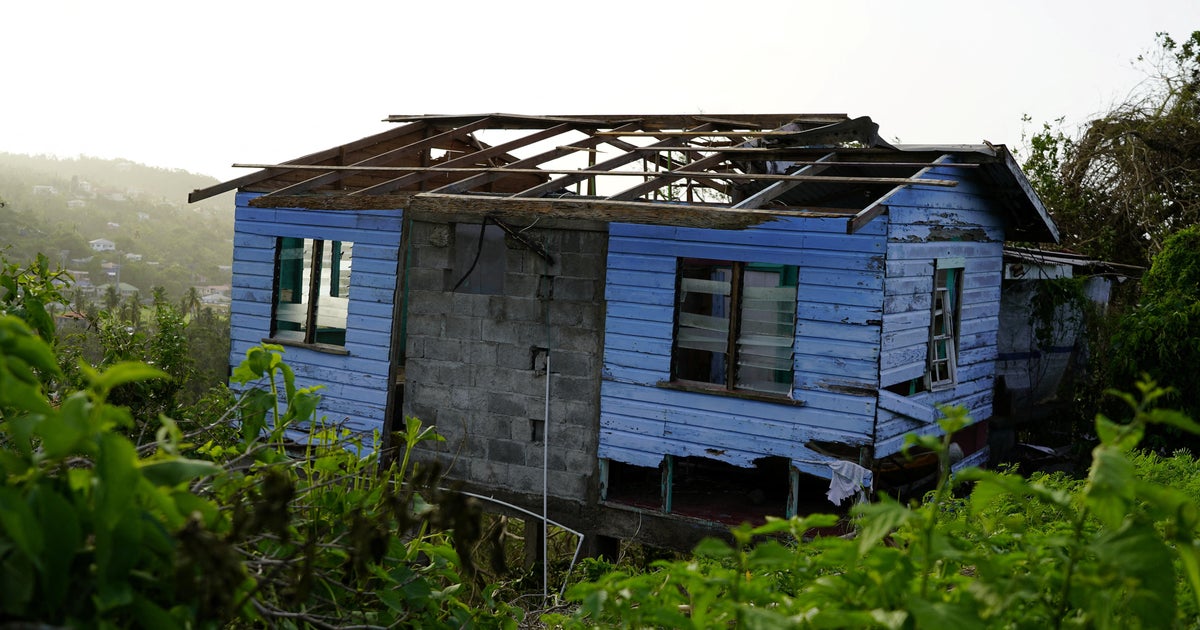
Hurricane Beryl leaves "Armageddon-like" destruction in Grenada

How to protect your home from a hurricane
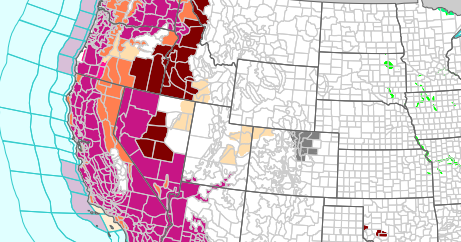
"Dangerous" heat expected to spread up West Coast, break records

Multiple people injured after Utah fireworks show malfunctions

COMMENTS
This is to certify that I, [Student's Name], a [Class/Grade Level] student, have successfully completed the "History Project On Mesopotamian Civilization For Class 11 Arts Cbse." The project explores the fundamental principles and key aspects of the chosen topic, providing a comprehensive understanding of its significance and implications.
This is to certify that I, [Student's Name], a [Class/Grade Level] student, have successfully completed the "History Project On Roman Empire For Class 11 Arts Cbse.". The project explores the fundamental principles and key aspects of the chosen topic, providing a comprehensive understanding of its significance and implications.
11th Grade. U.S. History. Free. Standard. All Filters (4) 3rd 4th Grade Social Studies Full Year Ancient Civilizations & Country Studies. Heart 2 Heart Teaching. $115.50. Trade Routes Activity--5th Grade Studies Weekly Week 8.
Åvâjb¢$éK ^ T ]"üF7aºEŽÓWx •˜ p;ÍN9]³[ Ý& P¥ AU&M? ^ °šè&ò 4þ¶ ±=‰×=ëãõïÆ ~g y@'ý{ö.mÒW× lIkz¯Ö¢WN "_]¦[‹¿5´·6O4Äg!&dß Žš¾'üQO¸dA E™(èƒ bÌ—™õ Aó Ö— ¯/%f¬¾ Õx}i Ô øÍ"õ ^ó½ ¬Ôc ;€$ ãsW¦ð³Hà IÓª ó ÷ 6s:Ö4ÔI 5³}> ŒªŸ;A÷›¡þï°kÑr _ ŠãÛ ...
UCI History Project. 300D Murray Krieger Hall. Irvine, CA 92697-3275
The syllabus in class-XI is organized around some major themes in world history. In class XII the focus shifts to a detailed study of some themes in ancient, medieval and modern Indian history. CBSE has decided to introduce project work in history for classes XI and XII in 2013-14 as a part of regular studies in classroom, as project work gives ...
This interactive Reconstruction Era activity for US History has your class assuming the roles of various people during the Age of Reconstruction and evaluating how ...
Next Post →. History Presentations for Class 11 History Chapter 1: From the Beginning of Time Click Here Click Here Click Here Chapter 2: Writing and City Life Click Here Click Here Click Here Chapter 3: An Empire Across Three Continents Click Here Click Here Chapter 4: The Central Islamic Lands Click Here Click Here Chapter 5: Nomadic.
11 Internal Assessment Project work ... History Syllabus 2024-25 Class XI-XII. RATIONALE The History curriculum introduces the students to a set of important historical events and processes through a focus on a series of historical issues, debates and through various sources. Discussion of these themes would allow students not only to know ...
Students create a tri-fold brochure that explains and illustrates the 3 branches of the U.S. government along with their powers. In addition, the brochure includes a diagram of Fe
Install Now. CBSE Class 11 History Syllabus 2022-23 includes Introduction to World History, Writing and City Life, An empire across three continents, Changing Cultural Traditions, Displacing Indigenous People etc for the session 2022 - 2023. Here is the detailed syllabus. To download class 11 History CBSE latest sample question papers for the ...
Exploring Suffragists. Students will do research to learn about suffragists, those who fought for the right of women to vote in the United…. Browse our printable 11th Grade American History/U.S. History Lesson Plans resources for your classroom. Download free today!
s in ancient, medieval, and modern Indian history.CBSE has decided to introduce project work in history for classes XI and XII in 2013-14 as a part of regular studies in classroom, as project work gives students. an opportunity to develop higher cognitive skills. It takes students to a life beyond text books and provides them a platform to ...
-if you're in my (Maechler) 5th period, you are turning your outline in to my turnitin.com class inbox 3. Start taking your outline and turning it into a rough draft Office hours (via email): Monday - 10 AM to 12 PM Wednesday - 12 PM to 2 PM Friday - 10 AM to 12 PM Week 4 (May 11th-May 15th) Instructions Week 5 (May 18th-May 22nd) Instructions
Arnold Krammer's essay on the history of German, Italian, and Japanese prisoners of war held in Texas during the Second World War. "Women's History Month: 'Oveta Culp Hobby' by Senator Kay Bailey Hutchison" Senator Kay Bailey Hutchison's profile of Oveta Culp Hobby, first secretary of the Department of Health, Education, and
Ø Mesopotamia is oldest civilization where writing and city life started firstly. It derived from two Greek words mesos meaning middle and Potamas meaning river. Ø Mesopotamia means land between two rivers-Euphrates and Tigris. Today it is part of Iraq. Ø Mesopotamia was known for its Writing, City life, Trade Literature, Mathematics ...
Browse history 11th grade projects resources on Teachers Pay Teachers, a marketplace trusted by millions of teachers for original educational resources.
The United States of America is a nation with a rich history and a noble goal: government of the people, by the people, for the people. ... 11 units · 43 skills. Unit 1. Worlds collide (1491-1607) Unit 2. Colonial America (1607-1754) ... world-class education to anyone, anywhere. Khan Academy is a 501(c)(3) nonprofit organization.
Students who got admitted in class XI this academic year 2022-23 must have a complete syllabus to score well at the end. Here is the compiled history curriculum for the academic year 2022-23 as per the latest CBSE notification. Themes in world history: Writing and City Life Iraq, 3rd millennium BCE. Growth of towns
11th Grade United States History Syllabus Teacher Information Ms. Villatoro Email: [email protected] "My fellow Americans, ask not what your country can do for you—ask what you can do for your country". - John. F. Kennedy Course Description: U.S. History is a yearlong survey of American history from Reconstruction to the present.
The resource includes a detailed teacher key for ease of assessment. This resource will help your students understand the general history of World War One. Sp. 6 th - 11 th. Social Studies - History, U.S. History, World History. $3.75. 4.8 (189) Showing 1 - 24 of 120,000 + results. Browse 11th grade u.s. history resources on Teachers Pay ...
Beryl tore through the Windward Islands on Monday after making landfall on Grenada's Carriacou Island as a Category 4 storm at 11:10 a.m., according to the hurricane center. The hurricane had ...
"Trump does not want people to know about the entire vanguard of extremist weirdos around him—and what their plans are when he governs," says Chris Hayes on voters finding out about the far ...
Browse resources on Teachers Pay Teachers, a marketplace trusted by millions of teachers for original educational resources.
Hurricane Beryl was passing the Cayman Islands on Thursday morning after it roared past Jamaica on Wednesday as a powerful Category 4 storm. It made landfall Monday on the island of Carriacou in ...